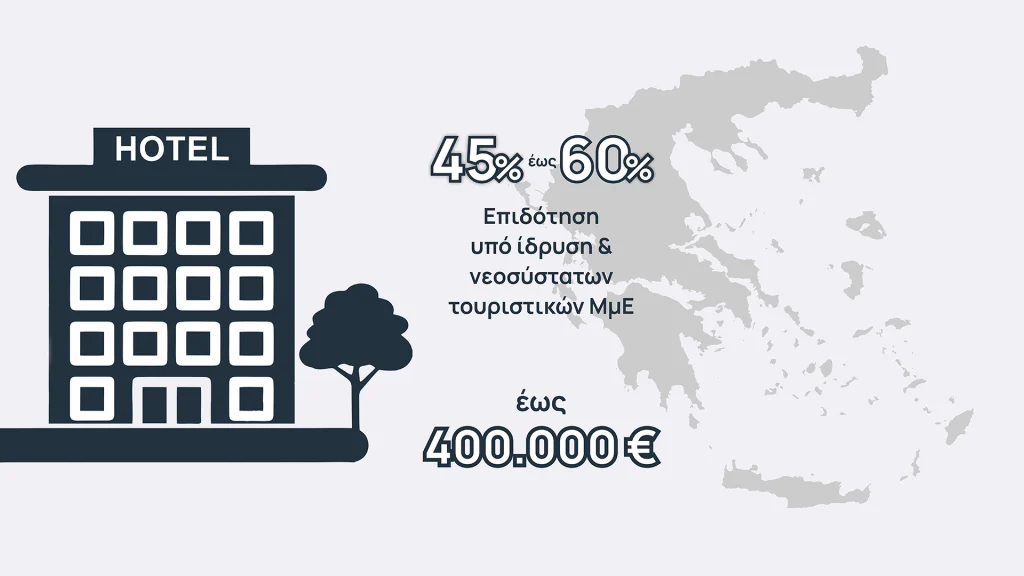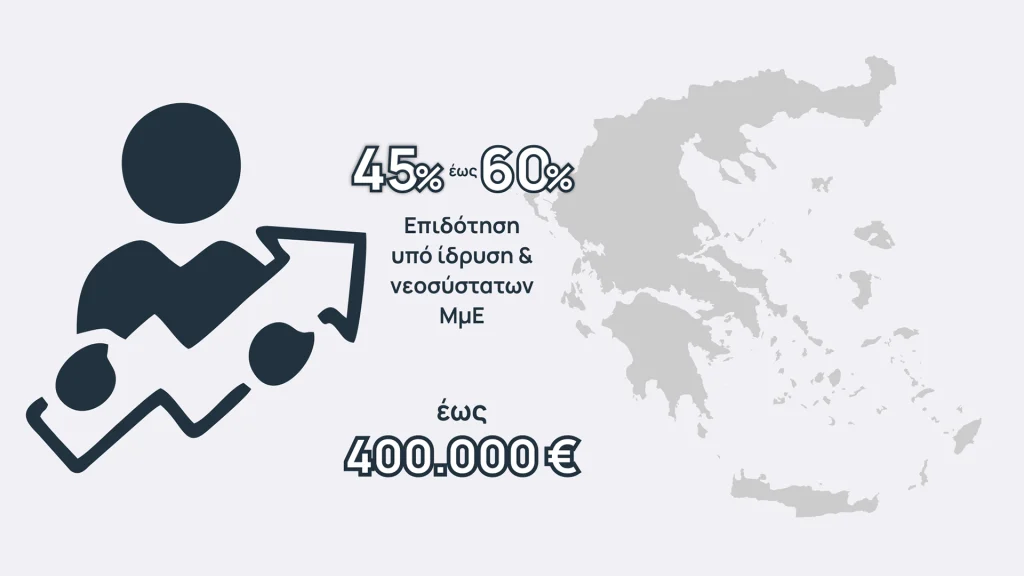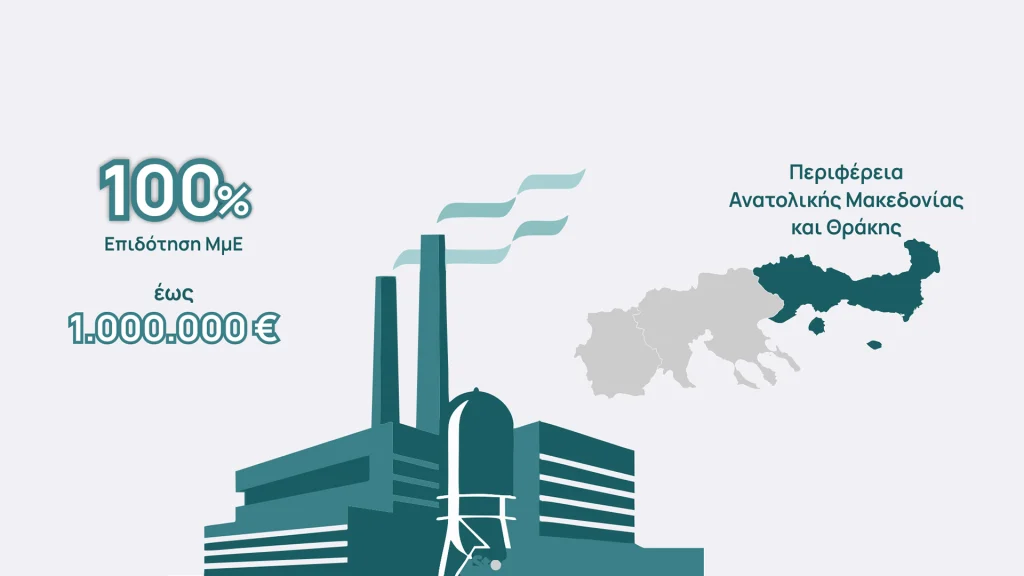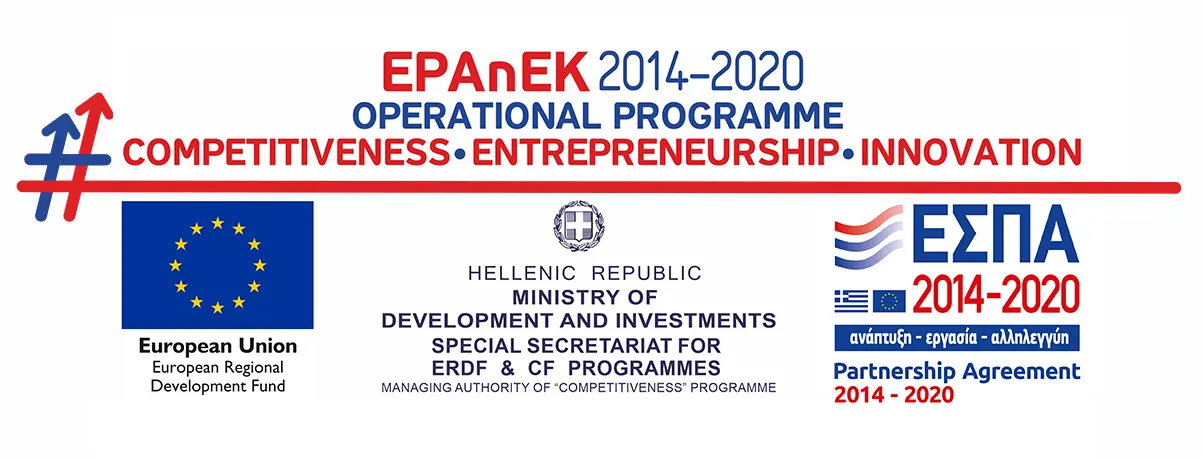
Purpose
The action aims to achieve a continuous transformation of industrial enterprises by following the best practices as proposed in the model industry 4.0. The foundations of Industry 4.0 is built on a set of technologies/ technological developments, manufacturing executive systems, Cloud Technologies, Applications, Machine-to-Machine Systems, High Computational power, which transform drastically industrial production and processing.
Who is it for
Beneficiaries are existing, and new, small, very small businesses and medium-sized enterprises engaged in economic activity in the Greek territory in the manufacturing sector.
Conditions
- To have the necessary valid operating licence or presented to the competent body a request for issue or renewal thereof, for the activity in which it operates.
- To have an establishment (registered or/and a branch in Greece at the time of payment of the aid.
- To be active or involved in the eligible regions in the assisted areas, as defined in the Regional Aid Map at the time of payment, until the payment of the whole of the aid, and to carry out expenses in Greece.
- Working exclusively with one of the following forms of business corporate / commercial (public Limited Company, Limited Liability Company, general Partnership Company, Limited partnership Company, I.K.E) and individual enterprises.
- Not a firm in difficulty within the meaning given in the law on state aid, point 18 of art.2 of the Regulation.
- To not be subject to bankruptcy, liquidation or receivership.
- Not pending against them recovered, following a previous decision of the Commission declaring an aid illegal and incompatible with the internal market.
- To have or to be bound by a solemn declaration that until the completion of the
action/investment will ensure that the appropriate infrastructure and services in order to minimize the barriers and facilitate access to people with disabilities.
- To submit to an investment plan by D.F.M.
- To declare as a place for the implementation of the activities of this action solely and exclusively to the Region.
- To submit a report to the investment plan of the costs that are not funded and are not integrated into another program, which is funded by national or community resources.
- The economic activity, which will concern the submitted investment plan, will be included in the sectors presented in Chapter I.1.5, "ELIGIBLE AREAS OF ACTIVITY".
- Be able to demonstrate that it has at least 25% of the required private participation in the proposed project, which in any case would not constitute state aid.
- The planned operation must satisfy the incentive effect, and for this purpose should not be initiated turnover of the aid project before the submission of the application submission by the beneficiaries in the context of this invitation.
What is subsidizing the program
Costs referred to in article 14 (Costs of regional aid)
Construction or modernization of buildings.
Configuration of the space environment in order to serve the needs of the unit.
Vehicles with which the company carries out transportation of materials, goods, within the area of the unit.
Purchase, transport and installation of new equipment, including laboratory equipment.
Equipment costs computerization of the company ( Telephone installations, Computer, peripheral equipment, security systems installations.
Costs for construction to ensure accessibility to people with disabilities.
Intangible assets, such as acquisition of computer software and acquisitions of patents, licenses of rights to intellectual property.
Costs referred to in article 18 (Aid for advisory services)
Advisory work provided by external consultants.
Costs referred to in article 31 (training Aid)
Personnel costs of the trainers.
Operating costs for trainers and trainees that are directly related to the training project.
Costs of advisory services in relation to the training project.
Personnel costs of trainees and general indirect costs.
Aid per region
The intensities differ depending on the region, the size of the company and the type of expenditure.
Aid per region
The intensities differ depending on the region, the size of the company and the type of expenditure.
|
Regions
|
Size of business Expenditure referred to in article 14
|
Size of business Expenditure referred to in article 14
|
Costs referred to in article 18, And 31
|
|---|---|---|---|
|
Regions
|
Medium
|
Small and very small
|
Regardless of size
|
|
North Aegean
|
70%
|
75%
|
50%
|
|
Crete
|
60%
|
70%
|
50%
|
|
If. Macedonia-Thrace
|
60%
|
70%
|
50%
|
|
Central Macedonia
|
60%
|
70%
|
50%
|
|
Continent
|
60%
|
70%
|
50%
|
|
Thessaly
|
60%
|
70%
|
50%
|
|
Ionian islands
|
50%
|
60%
|
50%
|
|
Western Greece
|
60%
|
70%
|
50%
|
|
Central Greece
|
50%
|
60%
|
50%
|
|
Evrytania
|
50%
|
60%
|
50%
|
|
Peloponnese: Municipalities of Megalopolis, Gortynia, Tripoli, Oichalia
|
60%
|
70%
|
50%
|
|
Peloponnese: Other municipalities
|
50%
|
60%
|
50%
|
|
South Aegean
|
50%
|
60%
|
50%
|
|
East Attica/ West of athens/ Piraeus and islands
|
35%
|
45%
|
50%
|
|
Western sector of Athens
|
25%
|
35%
|
50%
|
Maximum rates of spending on subsidised budget
|
Category of expenditure
|
Eligible percentage of subsidised budget
|
|---|---|
|
Mechanical equipment
|
≤100
|
|
Costs for buildings
|
≤20%
|
|
Specific facilities and building (for facilities that will contribute to the digital transformation)
|
≤40%
|
|
Costs of laboratory equipment
|
≤30%
|
|
Costs of software and it equipment
|
≤ 20%
|
|
Consultancy costs-studies for the adaptation of the firm to the requirements of industry 4.0
|
≤10%
|
|
Training Adaptation workforce Upskilling and reskilling
|
≤10%
|
Schedule
|
Starting date for submissions
|
23/11/2022
|
|---|---|
|
Expiry date submissions
|
23/01/2023
|
|
During the implementation
|
24 months
|
For more information, request a telephone appointment by pressing the button below, and a qualified economist of our company will contact you.





